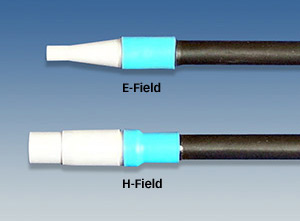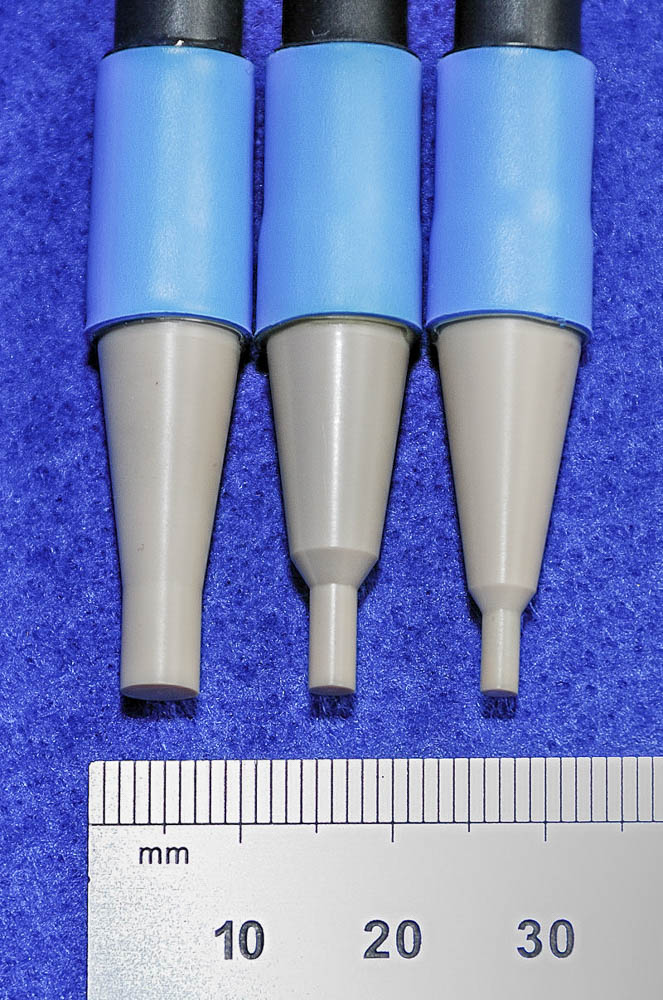Probes
Probes are the mechanism by which near-field spatial distributions of E-field, H-field and SAR can be mapped out around a DUT or other signal source.
With 3 orthogonal mini-antennas in their tip, probes have an impressive isotropic response largely independent of orientation. Diodes across each mini-antenna detect the RF fluctuations, and downconvert them to baseband, which can then be measured by a fast amp connected directly on top of the probe.
The primary distinction between types of probe is according to the medium in which the signal is measured:
- SAR probes are optimised to measurements in a dielectric medium which simulates the electrical performance of the brain or muscle
- HAC probes (“Hearing Aid Compatibility”), on the other hand, respond best to RF signals in air. HAC probes are further split into E and H types according to whether they detect electric or magnetic RF fields.
Showing all 2 results
-

HAC RF Probes
Air Field Probes Further applications such as Hearing Aid Compatibility (HAC) and OTA testing require air probes both for E and H field measurements, using the successful ‘in-liquid’ SAR probe design techniques, these new probes have been optimised for use in air as compared to SAR probes designed for use in lossy liquids. All IndexSAR […]Read moreView Product →
-

SAR Probes
Read moreView Product →
